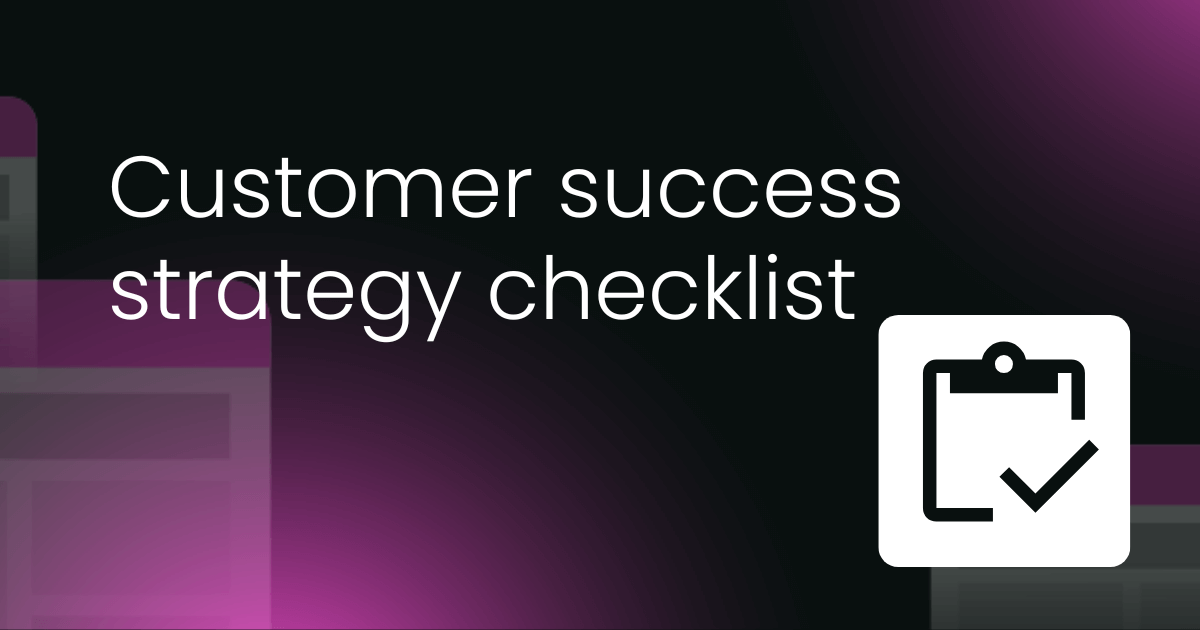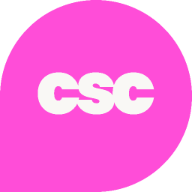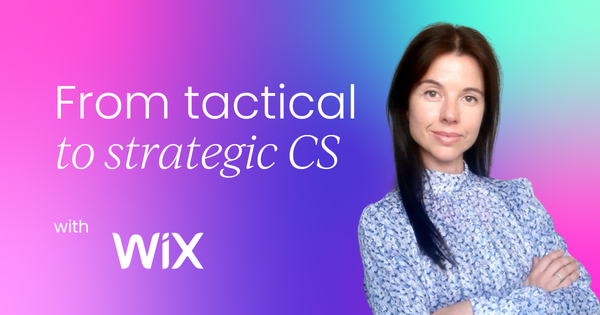Customer success is a proactive strategic function that helps customers achieve their strategic outcomes using a product or service.
However, there’s one big problem in customer success: Customer Success Managers (CSM) are overloaded with clients, meaning it's very easy to get bogged down in tactical matters.
As a CSM, it’s important to take a step back and align your company efforts with your customers' needs. This symbiosis, when effectively executed, leads to revenue growth and customer satisfaction.
Your role as a CSM involves fitting your product or service into your customer's broader picture, and for that, you will need to start doing these three main things:
- Moving from day-to-day issues to long-term goals and impact.
- Building stronger value-driven relationships.
- Positioning your product as an essential business solution.
How can you make this happen? Here’s how:
Moving from day-to-day issues to long-term goals and impact
It's easy to get bogged down in immediate, tactical concerns when clients come to you with pressing issues. However, it's important to shift the conversation towards long-term goals and the potential impact your product or service can have on achieving those goals.
One effective approach is to create an agenda for client calls that prioritizes strategic points first. Share this agenda with the client at the start of the call to set the tone and ensure you both follow it.
When clients raise tactical questions, you can acknowledge their importance while steering the discussion back to strategic alignment:
"Yes, I understand this is something we need to address, and it's on the agenda. Before we get to that, let's first align on how our solution can support your long-term objectives."
Building stronger value-driven relationships
Demonstrating that you've prepared for the conversation by researching and understanding your client's main goals is key to building trust and showing that you have their best interests at heart.
When conversations revolve around how they can achieve their goals, KPIs, and targets, you build stronger, more value-driven relationships – the kind where clients look forward to speaking with you rather than just showing up for a scheduled meeting.
Take this opportunity to build trust by addressing broader business challenges. Demonstrate that because you know your client, you can anticipate potential challenges or roadblocks ahead and make sure you bring them up proactively.
There’s no better way to get your clients to trust you than by showing that you truly understand their business and are committed to their success.

Positioning your product as an essential business solution
Focus the conversation on how your product or service directly addresses your customer's business goals and challenges. Position your offering as an indispensable solution that aligns with their strategic objectives and desired outcomes.
Rather than presenting a list of product features, frame each aspect as a means to solve their specific pain points and achieve their vision for the future.
Every discussion should tie your product roadmap and capabilities back to the customer's goals. People don't buy products; they buy solutions to their problems that enable new opportunities.
Shift the perspective from tactically reviewing your product to strategically articulating how it comprehensively addresses their core business needs both today and in the long term.
The key is making the customer's priorities the focal point, not your product itself. Demonstrate how tightly integrated your solution is with their definition of success. When you align your value proposition to their critical goals, it strengthens the partnership and opens doors for further innovation as their needs evolve.

Techniques for strategic conversations
To effectively transition from tactical to strategic conversations, CSMs can employ several powerful techniques:
1. Active listening
The foundation of any successful strategic conversation is active listening. This means listening to understand, not just to respond. Repeat or summarize what you hear to ensure you've fully grasped the customer's perspective and to reinforce that you're truly listening.
2. Strategic questioning
Strategic questions explore the future, customer needs, and long-term objectives. Examples include:
| Question 1 | "What's your company's strategy for the next year?" |
| Question 2 | "What is your digital strategy, and what changes will you be making to adapt to the coming year?" |
| Question 3 | "How is the budget allocated to your department looking for the year ahead?" |
| Question 4 | "What problem are you trying to resolve with our solution?" |
| Question 5 | "How were you resolving this problem before using our product/service?" |
| Question 6 | "Why do you want to resolve this problem? What's the broader goal you're working towards?" |
| Question 7 | "When you solve this problem, what will you do with the result? What's the ultimate outcome you're seeking?" |
| Question 8 | "How does success look for you in this area? How will you know you've achieved it?" |
The "5 whys" technique can also be powerful in uncovering the root cause or true goal behind a customer's immediate needs or requests.
Another line of strategic questioning revolves around your customer's competitors:
| Question 1 | "Who are your main competitors in this space?" |
| Question 2 | "What are the key things you're competing against them for?" |
| Question 3 | "How can our product or service give you a competitive advantage over those competitors?" |
3. Storytelling
Storytelling is a powerful way to connect with customers and help them envision the potential impact of your solutions. Share success stories from other clients, connecting specific product features or capabilities to the goals and outcomes they were able to achieve.
Put names and real examples out there – chances are, the clients you work with are already listed on your company's website, so there's no need to be vague. If you have well-known brands in your portfolio, highlight their successes with your product or service.
Your customers want to be successful, and they're interested in knowing what success looks like in practice. By sharing relatable stories of how others have leveraged your solutions to overcome challenges and achieve their objectives, you paint a vivid picture of what's possible for them.

4. Executive presence
The way you carry yourself and communicate during strategic conversations can have a significant impact on how you're perceived by customers. Aim to project an air of confidence and competence without coming across as arrogant or dismissive.
Be confident in the answers and insights you provide, but also acknowledge when you don't have all the answers – it's perfectly acceptable to say, "I don't have that information at hand, but I'll look into it and get back to you."
The important thing is to convey that you're in control, that the customer can trust you to handle their needs, and that you're committed to finding the right solutions for them.
5. Cross-functional thinking
As a CSM, it's important to think beyond just your immediate role and consider how the conversations and decisions you're having with a customer could potentially impact or create roadblocks in other areas of their project or organization.
Demonstrate this cross-functional awareness by raising potential concerns or opportunities that may span different departments or functions within the customer's business. This shows that you're thinking holistically about their success, not just within the narrow confines of your product or service.

Understanding the customer
At the heart of successful strategic alignment is a deep understanding of your customers – their company, industry, competitors, and the specific challenges they face. A key component of your role as a CSM is to know how to articulate the value your solution can provide in driving solutions to those challenges.
Demonstrate a firm grasp of the industry landscape and the competitive forces your customer is up against. Share insights and perspectives that show you've done your research and can speak knowledgeably about their business context.
When you can speak to their realities and pain points with authority and then map your product or service as the solution to those challenges, you establish yourself as a trusted partner invested in their long-term success, not just a vendor selling a product.
Conclusion
While it's tempting to get mired in tactical, day-to-day issues as a Customer Success Manager, true success for both your customers and your company hinges on strategic alignment. Achieving this requires a fundamental mindset shift - moving beyond a narrow, product-centric view to a holistic, future-focused perspective focused on driving your customers' long-term success and desired outcomes.
Implementing the strategies outlined here – transitioning from tactical to strategic conversations, building value-driven relationships, focusing on impact over features, and deeply understanding your customers' businesses – will elevate you from a product vendor to a trusted strategic partner.
However, this transformation won't happen overnight. It demands conscious effort and continuous refinement of skills like active listening, strategic questioning, storytelling, and projecting executive presence.
The path isn’t easy, but the rewards are immense – stronger customer relationships, increased revenue opportunities, and the profound satisfaction of playing an integral role in your customers' success stories.
As a CSM, you have the power to shape those narratives and cement your reputation as the kind of invaluable advisor that customers actively seek out.



 Follow us on LinkedIn
Follow us on LinkedIn





